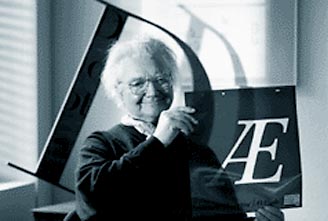
John Baskerville was born in 1706 and around the time he was seventeen he had already started dealing with fonts, working on engraving tombstones. Once he got a couple years older he then started teaching writing did bookkeeping and ran an engraving business. When he was thirty-two he started a popular, at that time, lacquering process called japanning which in turn made him wealthy. Once Baskerville was forty-four he started doing all of the things that he is known for today. After working on fonts for four years he finally produced the Baskerville font. During this time Baskerville made a new ink and used the new high quality woven paper to create ‘fine’ printing.
Cambridge University Press hired him to be their printer where he eventually made a Bible. The contradiction was Baskerville was an atheist and never married his lifelong partner. During the eighteenth century this was a really big deal as opposed to today.
Because he was so against religion he wanted to be buried on his own land, not in a cemetery. After the house went through the Birmingham riots, the new owner wanted a canal through the property and during this the workmen found Baskerville’s coffin. Now Baskerville rests in Warstone Lane Catacombs.
Why is Baskerville “unique”
Baskerville font is unique because it was developed and executed in a very specific way that the letters were made with good sized contrast in the thickness of the line. Also he worked on readability, making the serifs of the type narrow.
Adrian Frutiger was an illustrator, but more widely known for being a typographer. He created the Universe typeface. Making this font, he was creating it with on
 e major goal in mind; to not distract the eye with serifs or anything embellishing it. He wanted an easy flowing read. Thus he created the, san-serif, Universe font. The other major accomplishment Frutiger had was creating the Frutiger Grid. This grid was created and made for the reader to know exactly how a font would look depending on its font weight, width, and weather it is roman or oblique. The grid assignments each option to numbers. The first number represents the weight, and the second meaning width and roman or oblique. Obviously Universe font was the first to be used in this grid system, but since then many fonts are still thought of from their assignment on Frutiger’s grid.
e major goal in mind; to not distract the eye with serifs or anything embellishing it. He wanted an easy flowing read. Thus he created the, san-serif, Universe font. The other major accomplishment Frutiger had was creating the Frutiger Grid. This grid was created and made for the reader to know exactly how a font would look depending on its font weight, width, and weather it is roman or oblique. The grid assignments each option to numbers. The first number represents the weight, and the second meaning width and roman or oblique. Obviously Universe font was the first to be used in this grid system, but since then many fonts are still thought of from their assignment on Frutiger’s grid.

No comments:
Post a Comment